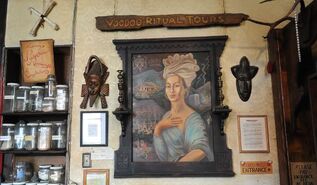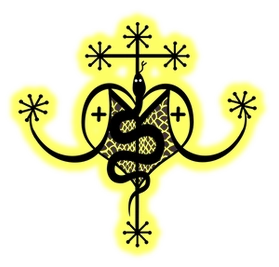No edit summary Tag: Visual edit |
(Adding categories) |
||
| (One intermediate revision by the same user not shown) | |||
| Line 8: | Line 8: | ||
Among the fifteen "voodoo queens" in neighborhoods scattered around 19th-century New Orleans, [[Marie Laveau]] was known as "the Voodoo Queen", the most eminent and powerful of them all. Her religious rite on the shore of Lake Pontchartrain on St. John's Eve in 1874 attracted some 12,000 black and white New Orleanians. |
Among the fifteen "voodoo queens" in neighborhoods scattered around 19th-century New Orleans, [[Marie Laveau]] was known as "the Voodoo Queen", the most eminent and powerful of them all. Her religious rite on the shore of Lake Pontchartrain on St. John's Eve in 1874 attracted some 12,000 black and white New Orleanians. |
||
[[Category:Religions]] |
[[Category:Religions]] |
||
| + | [[Category:Regions]] |
||
| + | [[Category:New Orleans Voodoo]] |
||
Latest revision as of 03:14, 28 January 2020

New Orleans Voodoo describes a set of spiritual beliefs and practices developed from the traditions of the
African diaspora in Louisiana. It is sometimes referred to as Mississippi Valley Voodoo when referring to its historic popularity and development in the greater Mississippi Valley. It is a cultural form of the Afro-American religions developed by the West and Central African populations of the U.S. state of Louisiana, though its practitioners are not exclusively of African descent. Voodoo is one of many incarnations of African-based spiritual folkways, rooted in West African Dahomeyan Vodun.
Marie Laveau[]
Among the fifteen "voodoo queens" in neighborhoods scattered around 19th-century New Orleans, Marie Laveau was known as "the Voodoo Queen", the most eminent and powerful of them all. Her religious rite on the shore of Lake Pontchartrain on St. John's Eve in 1874 attracted some 12,000 black and white New Orleanians.
